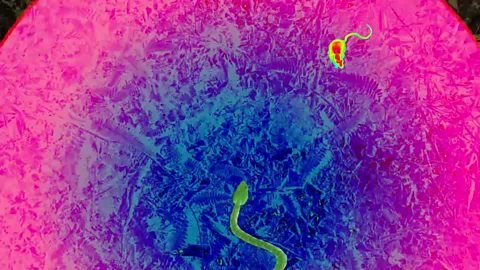Do all animals have taste buds?
Video - How aquatic animals taste
In this video, learn how different aquatic animals, like octopus and catfish, use different parts of their bodies to taste things.
Find out how different animals can detect taste with more than just their tongues.
Follow me please class. We’ve come to the aquarium to learn how different aquatic animals use different parts of their bodies to taste things.
Ah, the octopus!
Although it has a beak with a tongue inside it, the octopus actually tastes using its 8 tentacles.
Each tentacle can have more than two hundred suckers on it, and each sucker is packed with thousands of tiny taste buds. It’s like having 8 long squiggly tongues to taste with!
An octopus will eat crabs, snails, fish and even other octopus, but they can be fussy, and have even been known to leave a meal if they don’t like the taste.
Catfish get their name from the whiskers around their mouths, but it’s not only their mouths that they taste with.
Catfish actually have thousands of taste buds all over their bodies. They’re a bit like tongues that swim.
The taste buds are packed in together most in a catfish’s whiskers, which are called barbels.
Catfish often live at the bottom of murky rivers where it’s hard to see, so they use their barbels to search out tasty food.
Crabs have taste buds down their throats that tell them if the food they shovel in is safe to eat. If it tastes funny, the crab will spit it out.
But even before food gets to their mouths, crabs have started tasting it. Some have taste buds on their pincers and feet to help spot if something is food (like a mussel) or not food (like a pebble).
OK, lunchtime!
As you know, we flies taste with our feet too. If we like what we’re walking on, we’ll spit on it and then suck it up the liquid. Yummy!
Who’s for a donut?
Quiz
More on Living things
Find out more by working through a topic
- count6 of 36

- count7 of 36

- count8 of 36

- count9 of 36
